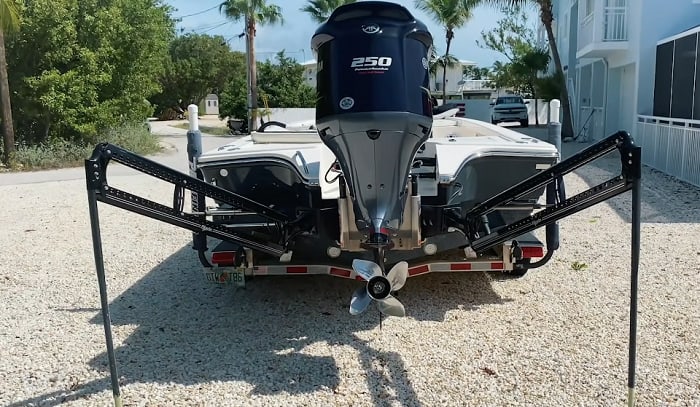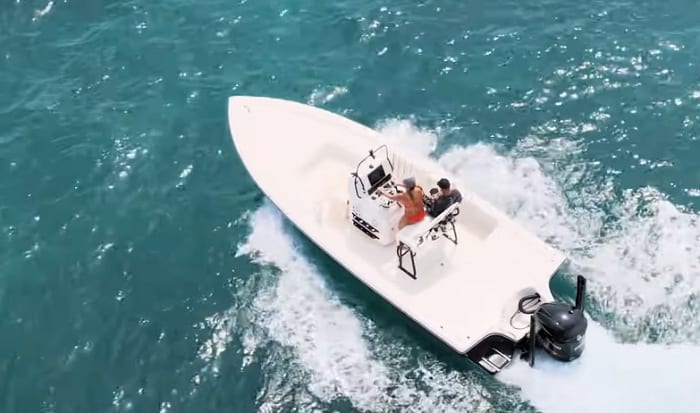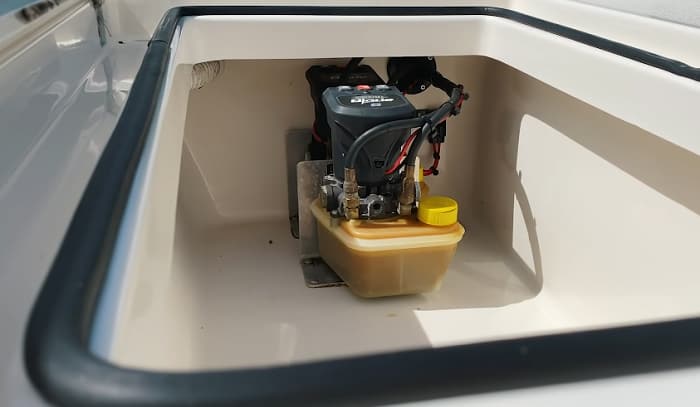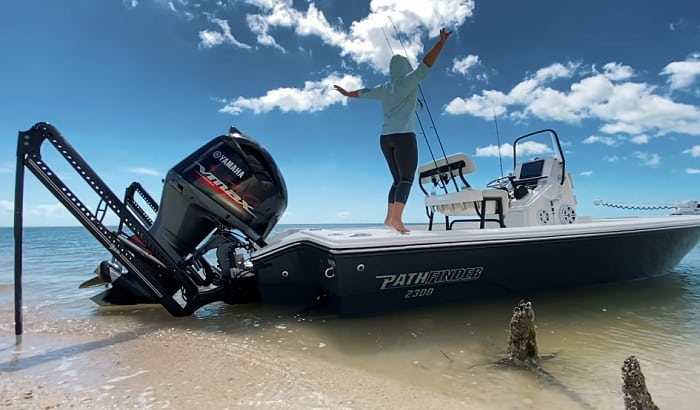What is a Power Pole on a boat? It’s a type of hydraulic or motorized stick anchor that works well in shallow water. It’s a crowd favorite among anglers who like to catch bass or go scalloping because you can quickly slide it into place to keep your boat steady and pull it out once you’re ready to move.
It’s just as strong as it’s reliable since it can keep boats in place even in heavy winds and currents. Like most anchoring implements, you have to familiarize yourself with how it works to make the most out of it.
Table of Contents
How the Original Power-Pole Works
I say “original” because brands like Minn Kota and specific dig-in anchors have since become big competitors of the Power-Pole in the shallow water anchor niche.
Still, that hasn’t stopped it from standing out and earning a loyal following altogether, and you can easily see why by learning how it delivers its benefits.
So how do Power-Pole anchors work exactly? Well, it can be summed up in as simple a phrase as “stop and go”.
- The Power-Pole shallow water anchor can be triggered with a single push of a button. A hydraulic pump unit powers the pole.
- The straightforward ‘Up’ and ‘Down’ buttons connote pulling up and setting the anchor, respectively. You only need to step on either of these buttons to perform those essential actions.
- You can freely adjust the speed at which the anchor will be deployed and retrieved for optimal convenience. For example, you can choose the lowest speed to make sure that you won’t spook the fish when you’re anchoring, and the highest speed when the currents get a bit strong.
- To make the most out of Power-Poles, you should assess the area you’re at while considering the wind direction, tide, and current – all the fundamentals of proper anchoring, in short!
As I’ve mentioned before, most power poles work best in shallow water, and the size of the pole often dictates the depth of water it can handle.
A typical 10-foot pontoon Power-Pole, for example, will be able to anchor better in 6 to 8 feet of water than a shorter variation.
That being said, if you’re considering trying out Power-Pole for boats, make sure you’re using the right kind, especially with regards to the water depth that you’ll be handling. I’ll discuss what the different types are in the following section.
The Different Power-Pole Varieties Based on Purpose
1. For sportier purposes
If your aim is stealth fishing or if you simply can’t get enough precision anchoring when fishing, the Pro 2 Series is a great option. You get plenty of depth options with it, and it is fairly beginner-friendly.
To most users, this is the best representative of the Power-Pole as a whole because of the said facts. The Blade Series, which has the highest holding power, comes at a close second.
2. For versatility
Versatility in this case is about being able to use the anchor in both saltwater and freshwater fishing. For this, it’s recommended to opt for a fishing boat Power-Pole that uses more heavy-duty materials like the Sportsman 2 Series.
3. For smaller vessels
The Power-Pole Micro also uses a spike driver to anchor more lightweight boats like kayaks and skiffs, but it’s entirely battery-run, unlike its hydraulic cousins. It comes with remote control with an auto Up and Down feature for quick anchoring as well as force adjustment.
Proven Benefits of Power-Poles
- Anchoring in water with minimal depth and rough currents becomes a breeze on bass boats and other similar fishing vessels. This is why the phrase, “Power-Pole bass boats” is almost a given among shallow water fishing cliques.
- The extremely quick and silent operation makes it ideal for casual and competitive fishing. Combined with the other main conveniences, this makes it very reliable for most.
- Installation is relatively easy, and the poles come with mounting kits. JL Marine, the Florida-based company that designs and produces Power-Poles, provides a detailed instruction manual for the entire procedure.
- As for cost, the different varieties mentioned above ensure a wide price range. You can check out platforms where you can buy a second-hand Power-Pole for sale like this site.
- The average Power-Pole cost, assuming it’s a complete set, ranges between $1,200 to $2,000, but you can save a lot more if you go for second-hand options.
- Lastly, Power-Pole on a boat used for emergency anchoring only underscores its compelling safety advantages.
How to NOT Use a Power-Pole
It’s not enough to know what do Power-Poles do as it’s just as important what they aren’t supposed to do. Using them improperly may actually be risky, as it may damage the poles or may even lead to accidents.
One incident I can recall involves the Power-Pole electrical losing pressure and dropping suddenly while the boat is moving. The vessel then made a hard right turn, causing the boat and its owner to slam into the docks. Nasty.
This is why it’s equally important to know what you should NOT be doing with a Power-Pole. Start with these two:
1. Putting it down too far or at a bad angle.
These tend to happen when you’re anchoring in shallow water. It puts a lot of pressure on the elbow joints of the Power-Pole, which may lead to costly repairs down the road.
2. Burying the spike too deep and not keeping it straight.
Again, this only contributes to the wear and tear of the poles. Letting it come down too far almost always runs the risk of the spike not coming off easily, which stresses the pole as a whole.
How Does the Power-Pole Fare Against the Competition?
Just ask around bass fishing circles about the best shallow water anchors, and you’ll soon find out that the Minn Kota Talon Power-Pole discussion continues. Overall, it’s hard to arrive at a clear winner.
Both have their own pros and cons. For instance, Power-Poles tend to handle saltwater fishing better, while the Talon suits freshwater more.
For an exceptional comparison of the two, take the time to watch this video:
Conclusion
So, to sum up the answer to the question, what is a Power Pole on a boat? It’s an anchor that “skinny water” anglers and fishers should learn to use if they want to make life easier.
While they’re user-friendly in general, it’s worth putting the time and effort into learning how to maximize their capabilities and refrain from doing anything that may lead to unnecessary damage. I hope this little guide will help you achieve that – and more – in your fishing endeavors.

“My intention from the first day establishing Boating Basics Online is to provide as much help as possible for boaters who want to experience a first safe and convenient trip. So feel free to join us and share your beautiful journeys to the sea!”




